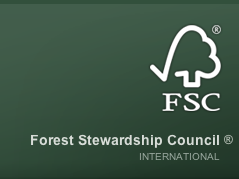 In my June 5 article discussing FSC Controlled Wood Risk Assessments, I used two contrasting examples to illustrate the wide disparity in how US companies approach the FSC Controlled Wood (CW) process. A Risk Assessment (RA) posted by Weyerhaeuser was used to illustrate an unusually rigorous approach.
In my June 5 article discussing FSC Controlled Wood Risk Assessments, I used two contrasting examples to illustrate the wide disparity in how US companies approach the FSC Controlled Wood (CW) process. A Risk Assessment (RA) posted by Weyerhaeuser was used to illustrate an unusually rigorous approach.
I was very pleased this week to receive a call and written feedback from the person responsible for this RA. Cassie Phillips is Weyerhaeuser’s Vice President for Sustainable Forests and Products. She is well known and widely respected in Sustainable Forest Management (SFM) circles here in the US. Her comments (copied in full below) offer a valuable insight into the challenging subject of Controlled Wood and Due Diligence – including some important points that I had not considered.
I liked your blog about Weyerhaeuser’s controlled wood risk assessment. We did the assessment to satisfy the FSC (and PEFC) chain of custody standards. I thought I should explain why it is so “extensive and exhaustive in scope,” which has to do with the antitrust risks around private standards. Until now these risks have been manageable, but they could go up significantly if FSC changes the standard.
Antitrust issues are important because private standards involve “concerted action” by competitors and are well known (in legal circles) to carry a risk of anticompetitive activity. The risk is lower for a standard that is truly voluntary, such as the FSC and SFI forest management standards, which we implement on our own lands. The risk is much higher for a procurement or controlled wood standard, because we impose it on our suppliers, most of whom have not volunteered to be part of a certification “scheme.” The most serious risk is that the standard is viewed as a group boycott, an illegal activity that does not allow for any balancing of the possible benefits – to the environment, efficiency, or otherwise – against the injuries caused to suppliers.
We did the research you see in our controlled wood risk assessment to address this antitrust risk. To understand who might be harmed and why, we compiled all of the risk assessments we could find – 180 so far – covering our supply regions in the Western US and Canada and the US South, plus we looked at the comprehensive (and highly influential) risk assessment done for the American Hardwood Export Council. We found virtually all the assessments conclude that the US and Canada are low risk for all of the five categories of wood FSC wishes to minimize in certified products. This is important because if an area is not low risk, a wood buyer has to either impose restrictions on individual landowners or “redline” the landowners out of its wood supply area. Because all our supply is low risk, we didn’t have to go to the next step and analyze whether we (or FSC) could defend the restrictions against an antitrust claim or investigation.
This risk equation will change, however, if FSC adopts the changes it is proposing to the controlled wood standard. We expect the US and Canada will no longer be low risk, because the goal will shift from avoiding wood that triggers global-level controversy, such as tropical deforestation or illegal logging, to avoiding wood if it triggers even local concern. In the US, especially, where over 90% of timber comes from privately owned lands and most of that from family-owned forests, we have grave concerns about the idea of “redlining” our sourcing areas and refusing to buy from suppliers unless they change their practices. We’ve expressed these concerns in comments on the standard [WY FSC CW comments], and we hope FSC will change direction. The controlled wood standard has succeeded by giving FSC-certified wood much greater access to markets when combined with wood from neighboring forests. The research collected in our risk assessment shows wide support for the current approach. We hope it will continue.
Cassie’s remarks offer a very compelling defense of the current “crowd sourcing” approach that FSC CW takes to Risk Assessment. She also raises an important, and generally overlooked, caution about the potential conflicts with restraint of trade legislation (known in the US as antitrust law). If you find these subjects interesting – and every FSC-certified company should find them interesting – then I recommend strongly that you read Weyerhaeuser’s comments to FSC on the subject. In it, she explores these subjects in more detail and raises some important and fascinating topics that I hope to (with her permission) explore in more detail soon.
Join the Conversation
Many thanks to Cassie for engaging in this important discussion, and for agreeing to offer her valuable insights up for public consideration. She and I both feel strongly that the FSC, SFI, and PEFC community needs more open discussion on challenging topics like this. Do you agree? Please comment below, or drop me a note directly and we’ll keep the conversation going.
UPDATE (26 Aug 2014): I received a brief and informal note from senior staff at FSC-US on this important question. They tell me that FSC has specifically consulted with legal counsel on the anti-trust question raised by Weyerhaeuser and are of the opinion that it poses no threat to the new CW format. I have encouraged them to provide the details of their rational in a public way, and offered space on this site. We hope they will have more details for us very soon.